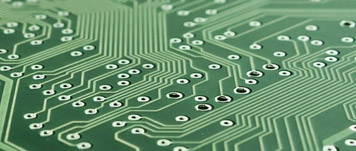- +61 1300 BUY PCB (1300 289 722)
- +61 3 9111 1887
Whether you want single sided, double sided or multi-layer printed circuit board - we'll make your PCB manufacturing faster, easier and more cost-effective
Printed circuit boards (PCBs) & SMT Stencils
Flexible and Rigid-Flexible PCBs
Serving in Melbourne, Sydney, Brisbane, Perth, Adelaide, Canberra, Gold Coast, Hobart and the rest of Australia
A flexible printed circuit usually consists of copper tracks (i.e. metallic layer) bonded to a dielectric layer (i.e. polyimide). The thickness of copper and dielectric layer varies depending on the application requirements. The adhesive binds the metal foil to the substrate to create a laminate. Polyesters (PET) and polyimides (PI) are the most common adhesives. Coverlay is a thin film made of polyimide (PI) or acrylic used to protect the unexposed area of flexible PCBs. The function of the coverlay can be easily explained as the coverlay to flexible PCBs is a solder mask to rigid PCBs.
Classifications of Flexible Circuits
Pure Flexible PCB: Overall circuit board is 100% Flexible
Flexible PCB with stiffener(s): Flex circuit needs to be rigid in certain areas, so FR4 or polyimide stiffeners can be added by lamination or PSA (pressure-sensitive adhesive). Stiffeners work well mainly when components are only on one side of the board.
Rigid-flexible PCB: It is a combination of a rigid board and a flexible circuit. The flexible layers are sandwiched between two rigid boards. Rigid-flex PCB works well when components are on both sides of the board.
Flexible PCBs (with or without stiffener)
A Flex Circuit or Flex PCB is a patterned arrangement of printed circuitry and components that utilizes flexible based material with or without flexible coverlay. These flexible electronic assemblies may be fabricated using the same components used for rigid printed circuit boards, but allowing the board to conform to a desired shape (flex) during its application.
Flex circuits offer the same advantages of a printed circuit board: repeatability, reliability, and high density but with the added “twist” of flexibility and vibration resistance. The most important attribute compelling designers to adopt flex circuit technology is the capability of the flex circuit to assume three-dimensional configurations.
Flexible Printed Circuits (FPC) are made with a photolithographic technology. An alternative way of making flexible foil circuits or flexible flat cables (FFCs) is laminating very thin (0.07 mm) copper strips in between two layers of PET. These PET layers, typically 0.05 mm thick, are coated with an adhesive which is thermosetting, and will be activated during the lamination process.
Types of Flexible PCBs
Advantages of Flexible PCBs
The primary benefits of flexible PCB compared to traditional cabling and rigid boards include the following benefits:
- Reduced wiring errors
- Elimination of mechanical connectors
- Unparalleled design flexibility
- Higher circuit density
- More robust operating temperature range
- Stronger signal quality
- High vibration resistance
- Improved reliability and impedance control
- Size and weight reduction
Disadvantages of Flexible PCBs
- Higher material cost than rigid or rigid flex PCB
- Low temperature ability in flex circuits
- More difficult & complex assembly
- Easily damaged through improper handling (easy to bend and dent)
- Sensitive to scratching
- Difficult or impossible to repair once damaged
- Requires proper storage conditions (sulfur free plastic)
Applications of Flexible PCBs
Flexible PCB’s are used in various applications:
- Notebook computers, LCD display, CD driver and hard disk
- Printer, facsimile machine, scanner and sensor
- Mobile phone, mobile phone battery, intercom, antenna and ribbon wire for mobile phone
- Various types of high-end cameras, digital cameras, digital video recorder and DV
- Magnetic head and laser head for video recorder, CD-ROM, VCD, CD and DVD
- Instrumentation for aerospace, satellite, medical apparatus and automobile
- LED bar, LED FPC flashlight, toy, chaplet and lantern decoration
- LED aluminum substrate, power aluminum substrate, high-power LED and copper substrate
Rigid-Flexible PCB
Rigid-Flexible circuit boards are made of Rigid circuits (FR4 PCB) and Flex circuits & circuitries. The Rigid circuits (FR4 PCB) are connected with single or multiple flex through PTH (via), inside or outside of Flex circuit layer, so it enjoys the advantage of both Rigid FR4 PCB and Flex circuit.
- Two more conductive layers with either flexible or rigid insulation material as insulators between each one; outer layers may have covers or exposed pads.
- Plated through-holes extend through both rigid and flexible layers (with the exception of blind and buried vias).
- Access holes or exposed pads without covers may be on either or both sides. Vias or interconnects can be fully covered for maximum insulation.

Product Comparison Chart
We have the capability to manufacture and assemble Single Sided/Layer (SS), Double Sided/Layer (DS-NPTH & DS-PTH) and MultiLayer (up to 32 layers) PCBs with RoHS as an option.
Compare Low Cost Prototype with Standard Prototype and Production. Choose one which best suits your requirements.
Compare now!
Our capabilities
We can manufacture and assemble Single Sided/Layer (SS), Double Sided/Layer (DS-NPTH & DS-PTH) and MultiLayer (up to 32 layers) PCBs with RoHS as an option.
Need to know more about our capabilities?
What our customers say?
QualiEco Circuits Limited is an excellent supplier to us! We appreciate the quality of service and support that we receive from QualiEco Circuits. They always deliver what is promised
For printed circuit boards (PCBs) or PCB assembly you can count on. Talk to the friendly and experienced team at QualiEco Circuits, Australia.


